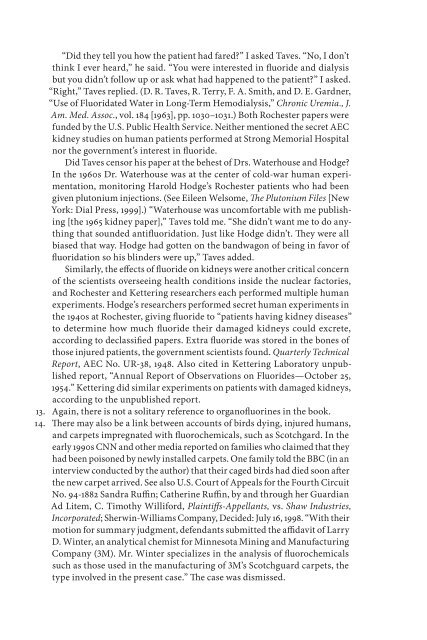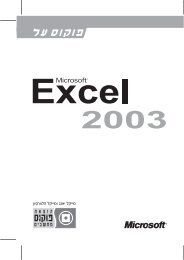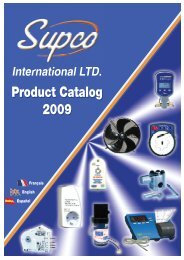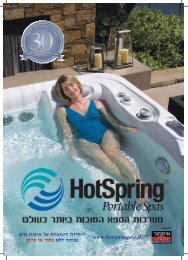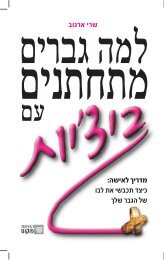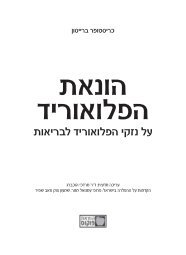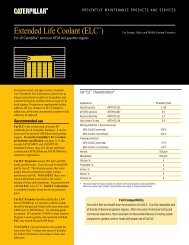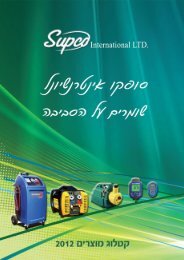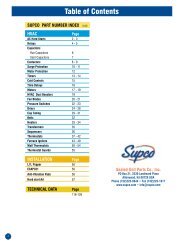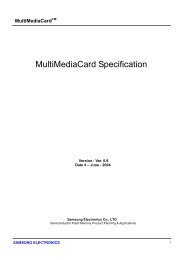Epigraphs Note on Terminology Acknowledgments Introduction
Epigraphs Note on Terminology Acknowledgments Introduction
Epigraphs Note on Terminology Acknowledgments Introduction
You also want an ePaper? Increase the reach of your titles
YUMPU automatically turns print PDFs into web optimized ePapers that Google loves.
“Did they tell you how the patient had fared?” I asked Taves. “No, I d<strong>on</strong>’t<br />
think I ever heard,” he said. “You were interested in fluoride and dialysis<br />
but you didn’t follow up or ask what had happened to the patient?” I asked.<br />
“Right,” Taves replied. (D. R. Taves, R. Terry, F. A. Smith, and D. E. Gardner,<br />
“Use of Fluoridated Water in L<strong>on</strong>g-Term Hemodialysis,” Chr<strong>on</strong>ic Uremia., J.<br />
Am. Med. Assoc., vol. 184 [1963], pp. 1030–1031.) Both Rochester papers were<br />
funded by the U.S. Public Health Service. Neither menti<strong>on</strong>ed the secret AEC<br />
kidney studies <strong>on</strong> human patients performed at Str<strong>on</strong>g Memorial Hospital<br />
nor the government’s interest in fluoride.<br />
Did Taves censor his paper at the behest of Drs. Waterhouse and Hodge?<br />
In the 1960s Dr. Waterhouse was at the center of cold-war human experimentati<strong>on</strong>,<br />
m<strong>on</strong>itoring Harold Hodge’s Rochester patients who had been<br />
given plut<strong>on</strong>ium injecti<strong>on</strong>s. (See Eileen Welsome, The Plut<strong>on</strong>ium Files [New<br />
York: Dial Press, 1999].) “Waterhouse was uncomfortable with me publishing<br />
[the 1965 kidney paper],” Taves told me. “She didn’t want me to do anything<br />
that sounded antifluoridati<strong>on</strong>. Just like Hodge didn’t. They were all<br />
biased that way. Hodge had gotten <strong>on</strong> the bandwag<strong>on</strong> of being in favor of<br />
fluoridati<strong>on</strong> so his blinders were up,” Taves added.<br />
Similarly, the effects of fluoride <strong>on</strong> kidneys were another critical c<strong>on</strong>cern<br />
of the scientists overseeing health c<strong>on</strong>diti<strong>on</strong>s inside the nuclear factories,<br />
and Rochester and Kettering researchers each performed multiple human<br />
experiments. Hodge’s researchers performed secret human experiments in<br />
the 1940s at Rochester, giving fluoride to “patients having kidney diseases”<br />
to determine how much fluoride their damaged kidneys could excrete,<br />
according to declassified papers. Extra fluoride was stored in the b<strong>on</strong>es of<br />
those injured patients, the government scientists found. Quarterly Technical<br />
Report, AEC No. UR-38, 1948. Also cited in Kettering Laboratory unpublished<br />
report, “Annual Report of Observati<strong>on</strong>s <strong>on</strong> Fluorides—October 25,<br />
1954.” Kettering did similar experiments <strong>on</strong> patients with damaged kidneys,<br />
according to the unpublished report.<br />
13. Again, there is not a solitary reference to organofluorines in the book.<br />
14. There may also be a link between accounts of birds dying, injured humans,<br />
and carpets impregnated with fluorochemicals, such as Scotchgard. In the<br />
early 1990s CNN and other media reported <strong>on</strong> families who claimed that they<br />
had been pois<strong>on</strong>ed by newly installed carpets. One family told the BBC (in an<br />
interview c<strong>on</strong>ducted by the author) that their caged birds had died so<strong>on</strong> after<br />
the new carpet arrived. See also U.S. Court of Appeals for the Fourth Circuit<br />
No. 94-1882 Sandra Ruffin; Catherine Ruffin, by and through her Guardian<br />
Ad Litem, C. Timothy Williford, Plaintiffs-Appellants, vs. Shaw Industries,<br />
Incorporated; Sherwin-Williams Company, Decided: July 16, 1998. “With their<br />
moti<strong>on</strong> for summary judgment, defendants submitted the affidavit of Larry<br />
D. Winter, an analytical chemist for Minnesota Mining and Manufacturing<br />
Company (3M). Mr. Winter specializes in the analysis of fluorochemicals<br />
such as those used in the manufacturing of 3M’s Scotchguard carpets, the<br />
type involved in the present case.” The case was dismissed.


